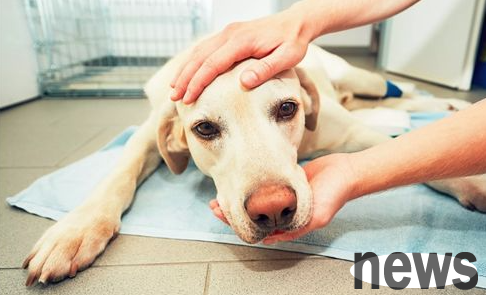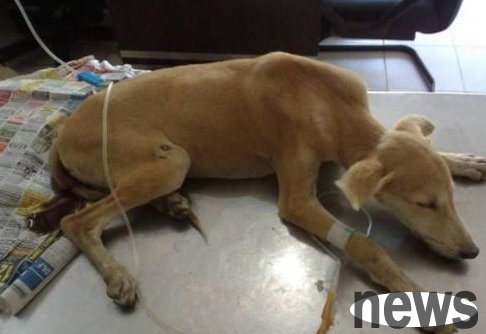When it comes to canine distemper, tiny, etc., the owner usually buys a dog every week. The dog starts to get sick after 1 or 2 days after the examination. After examination, it is tiny, tiny, tiny, tiny, tiny, tiny, tiny, tiny, tiny, tiny, tiny, tiny, tiny, tiny, tiny, tiny, tiny, tiny, tiny, tiny, tiny, tiny, tiny, tiny, tiny, tiny, tiny, tiny, tiny, tiny, tiny, tiny, tiny, tiny, tiny, tiny, tiny, tiny, tiny, tiny, tiny, tiny, tiny, tiny, tiny, tiny, tiny, tiny, tiny, tiny, However, in some cases, the owner is not suitable for taking care of the dog in person, but should isolate the dog, otherwise it will be transmitted to other dogs and even the owners at home. There are roughly two types of cases where dogs need to be isolated. One is an infectious disease between dogs, and the other is zoonotic disease. No matter which type it is, the owner should make up his mind to let the sick and weak dogs be alone.

1. Infectious diseases between dogs
1. Canine kennel cough is a highly contagious respiratory disease that can cause dogs to cough, vomit, drowsiness, and loss of appetite. Kennel cough can usually be transmitted to other dogs through air, direct contact, and food, and is commonly found in puppies. As long as one dog in a litter has a kennel cough, other dogs will immediately get sick, so the owner should isolate the dog with a kennel cough in time. The owner can give the dog antibiotics and cough medicines to relieve the symptoms of coughing, and can also get vaccinated to prevent kennel cough.
If a dog has these diseases, the owner should be isolated, otherwise other dogs will suffer.
2. Canine distemper is a viral disease that is very easy to infect dogs. Once a dog suffers from canine distemper, it will develop symptoms such as fever, runny nose, vomiting and diarrhea, difficulty breathing, and epilepsy. Canine distemper virus can be transmitted to other dogs through direct contact or air, so owners should be careful to isolate the sick dog. Canine distemper can be cured, but it is relatively difficult and can be relieved through drug treatment. Therefore, the most important thing is to prevent it, that is, take the dog to get vaccinated.
3. Paraviruses will quickly invade the dog's body, destroying the dog's intestines and bone marrow cells, causing vomiting, diarrhea and bloody, dehydration, etc. As long as parvovirus damages the intestine, the possibility of death of a dog will increase greatly. The most effective way to prevent it is to inject vaccinated during the puppy period. Paraviruses can survive in soil or outdoors for five to seven months, and can survive longer in winter. If you have a tiny dog before, before raising a dog again, you must thoroughly disinfect it and take the dog home after a while. 4. Coccidiosis is a parasitic infection disease that can infect each other in dogs or other domestic animals. The most common symptoms of sick dogs include diarrhea, bloody dehydration, loss of appetite, weight loss, etc. Although this parasite is easily spread, it can also be easily eliminated with drug treatment.
2. Zoonotic diseases
1. Ticks and ticks carry viruses with many zoonotic diseases, the most common one is Lyme disease. The famous American singer Avril suffers from the torture of Lyme disease. Although these diseases will not be directly transmitted to the owner by dogs, people may become ill after being bitten by ticks on dogs and destroy their immune system. In severe cases, they can be fatal. Owners should pay more attention to their dog's living environment and bathe the dog regularly to prevent the dog from getting sick by biting ticks.
2. Rabies can be transmitted to the owner through bites and saliva. It can be said that rabies is the most dangerous zoonotic disease known. Influenza-like symptoms appear in the early stage of rabies, which will develop into neurological dysfunction. Dogs will be afraid of light and water, lose their direction, epilepsy, and even attack others. Once serious symptoms appear, neither dog nor humans can cure it, and even treatment is a difficult problem. But owners and dogs can prevent rabies by injecting vaccines. Once this disease is discovered, the dog should be isolated immediately, otherwise the dog will attack other dogs or humans.

3. Leptospirosis Leptospirosis is a bacterial virus. This bacteria is commonly found in the urine, contaminated water or soil of a sick dog. Therefore, the owner is likely to accidentally contact the dog's urine and get infected while taking care of the sick dog. Once a dog suffers from rapeelocardium, its liver and other important organs will be affected. The doctor will prescribe some antibiotics or other drugs for treatment, but the owner still needs to isolate the dog to prevent infection.
4. Ringworm is caused by fungal infections in dogs. Common symptoms include itchy and swollen skin, scaly skin, and hair loss. Ringworm can not only infect most animals, such as dogs, cats, and rabbits, but also infect humans, generally through direct contact. When the owner sees the dog's above symptoms, it is best not to touch it directly to avoid infection.
Owners can apply ointment to their dogs regularly. Although ringworm will not cause too serious symptoms, it is easily transmitted to children or the elderly who are low in immunity. These diseases can usually be transmitted between dogs, and if you have multiple dogs in your home, it is best to isolate the dog after it becomes ill. If it is a zoonotic disease, the owner should pay more attention to the daily care of the dog and appropriately control the distance with the dog. Although the dog is sick, it is pitiful enough, but you should pay more attention to it. It is for the dog and yourself. After all, the owner is sick, so who will take care of the dog?